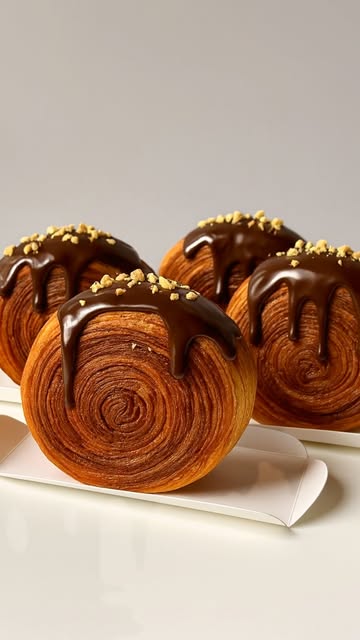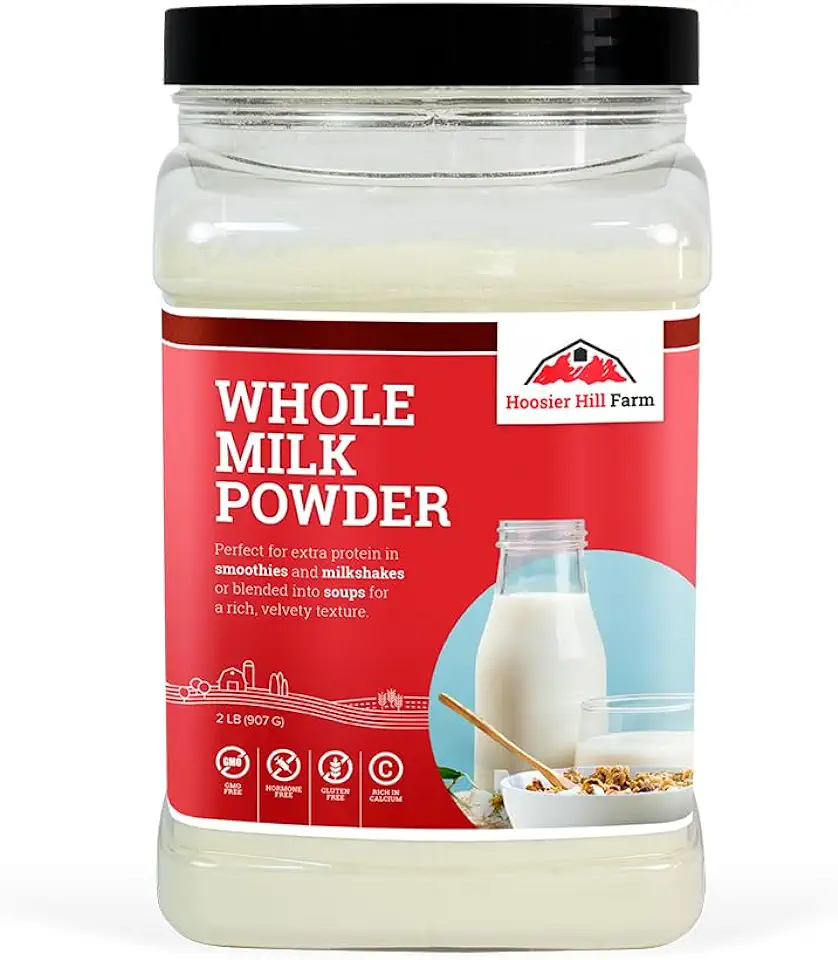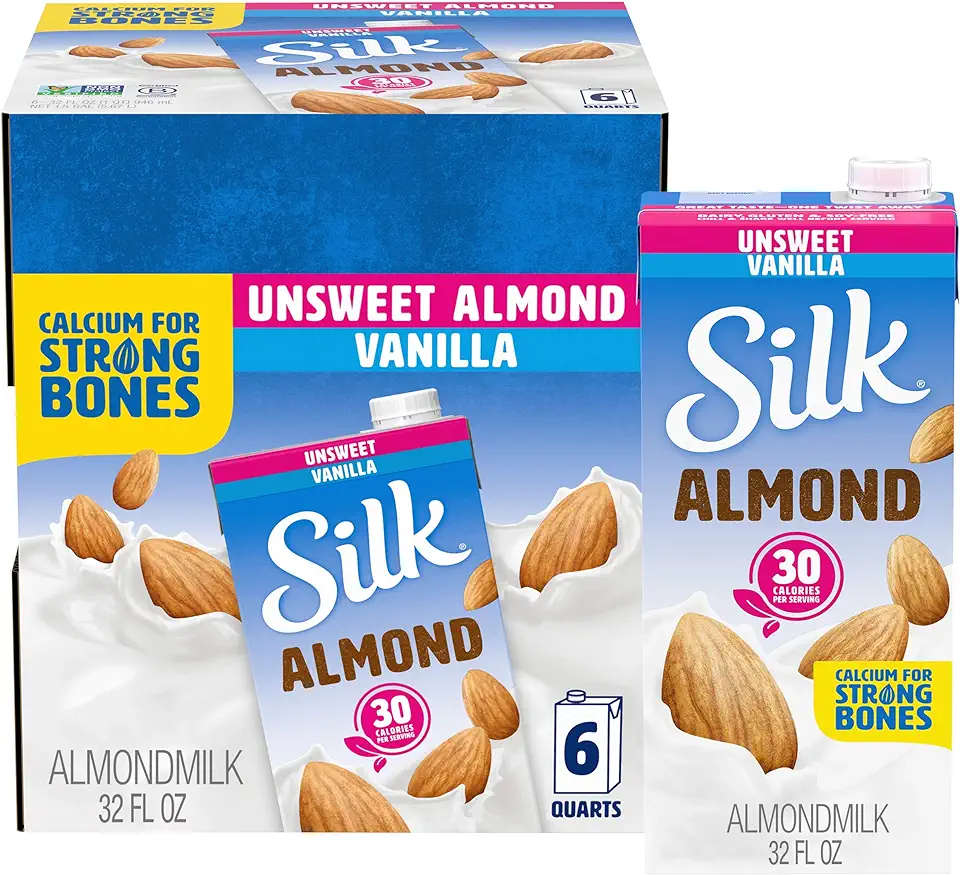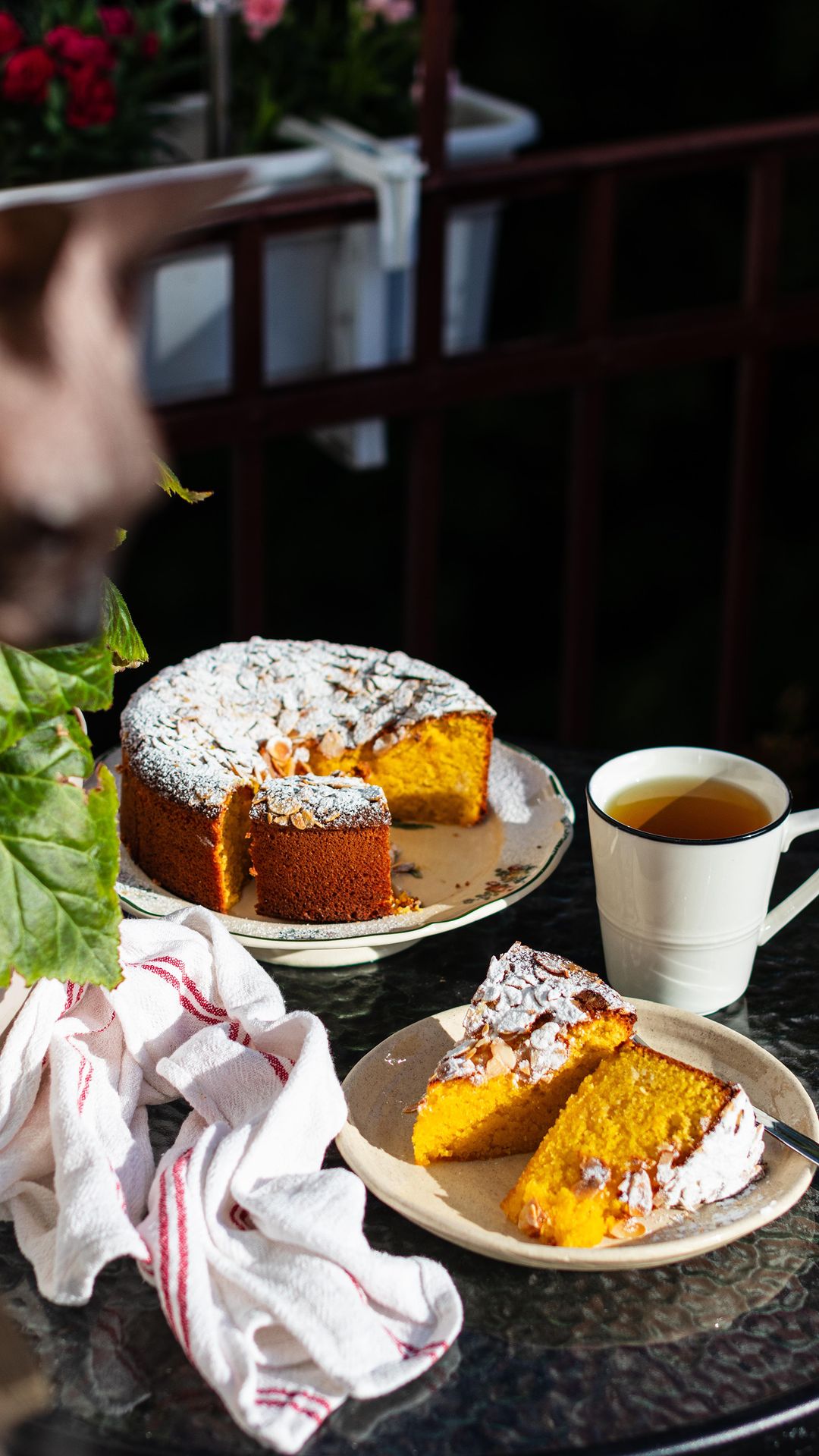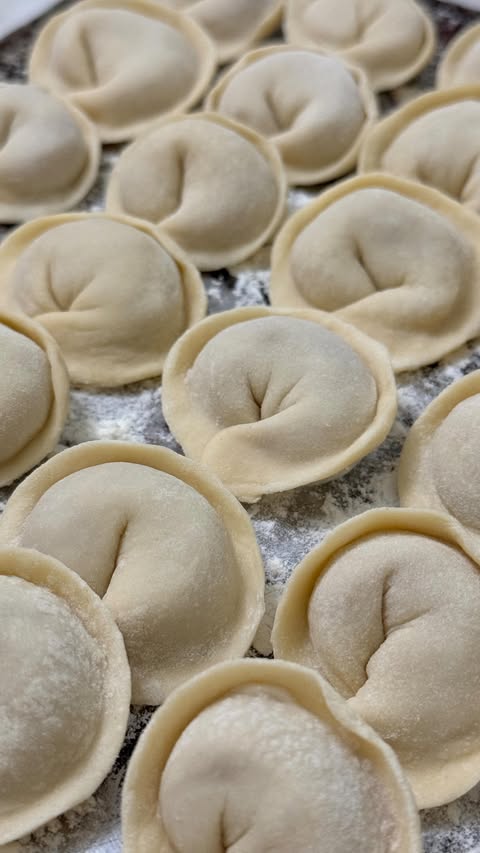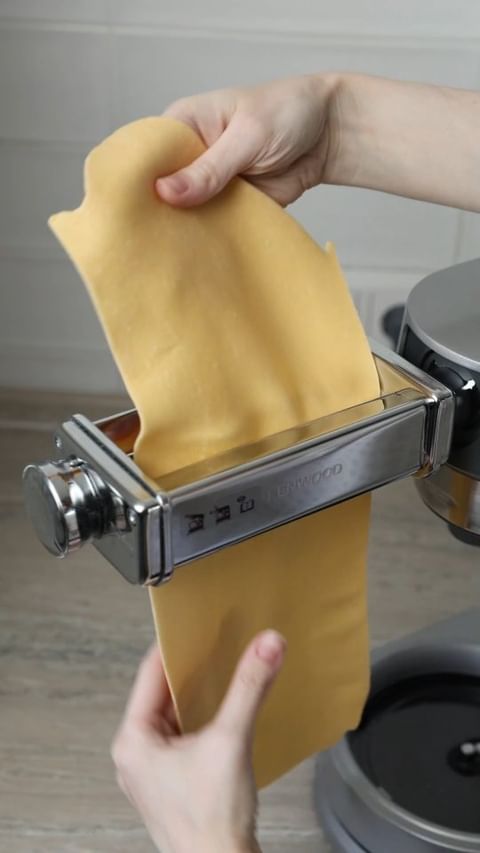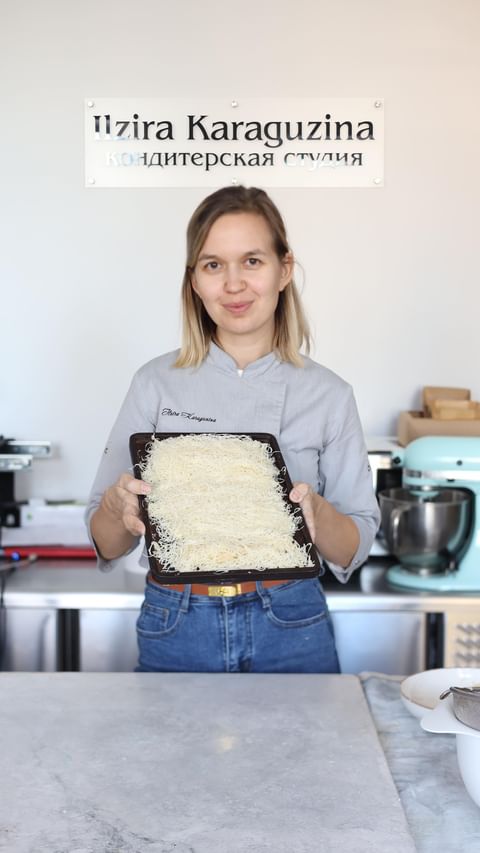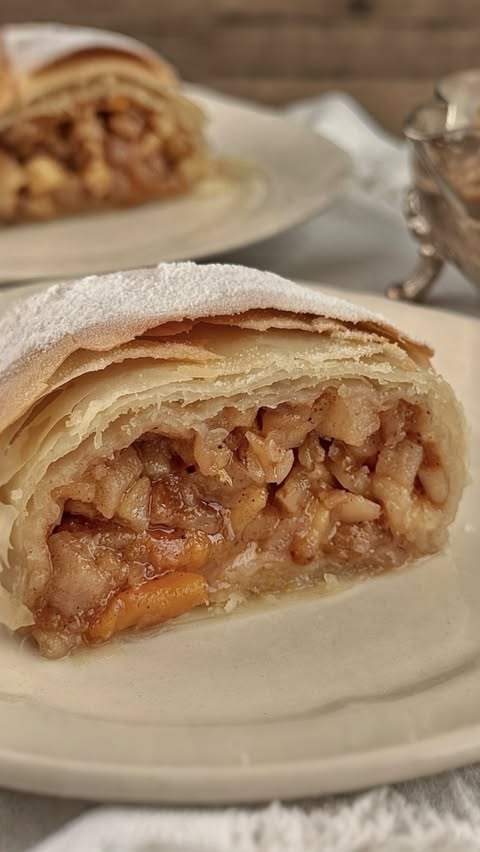Ingredients
Dough Ingredients
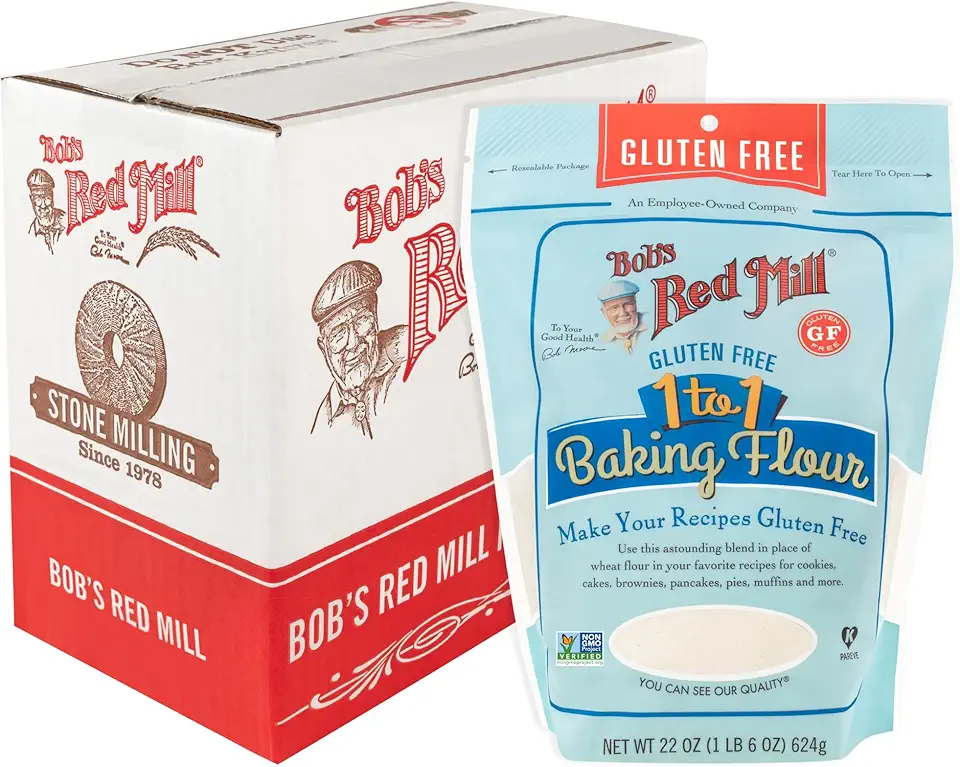 Bob's Red Mill Gluten Free 1-to-1 Baking Flour, 22 Ounce (Pack of 4)
$23.96
View details
Prime
Bob's Red Mill Gluten Free 1-to-1 Baking Flour, 22 Ounce (Pack of 4)
$23.96
View details
Prime
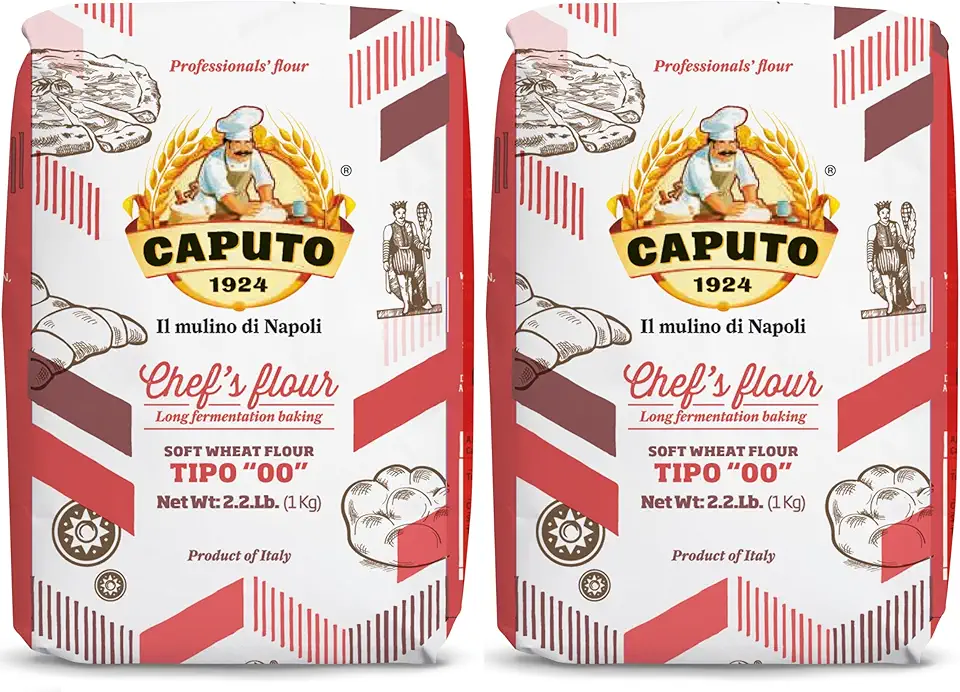 Antimo Caputo Chefs Flour - Italian Double Zero 00 - Soft Wheat for Pizza Dough, Bread, & Pasta, 2.2 Lb (Pack of 2)
$16.99
View details
Prime
best seller
Antimo Caputo Chefs Flour - Italian Double Zero 00 - Soft Wheat for Pizza Dough, Bread, & Pasta, 2.2 Lb (Pack of 2)
$16.99
View details
Prime
best seller
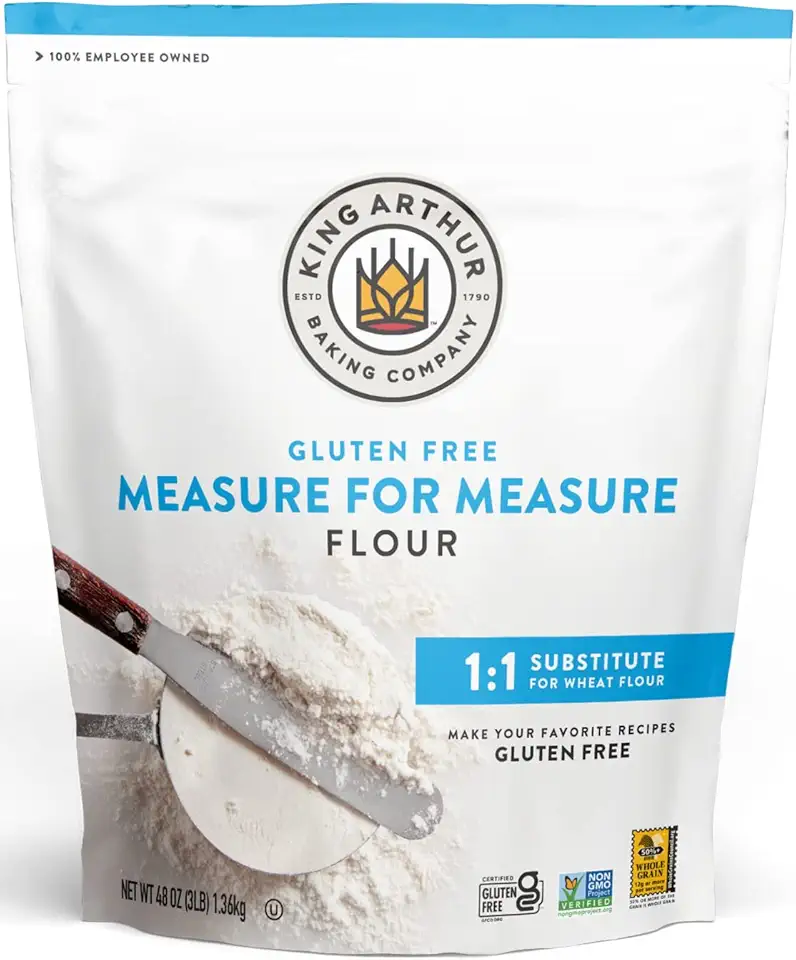 King Arthur, Measure for Measure Flour, Certified Gluten-Free, Non-GMO Project Verified, Certified Kosher, 3 Pounds, Packaging May Vary
$8.62
View details
King Arthur, Measure for Measure Flour, Certified Gluten-Free, Non-GMO Project Verified, Certified Kosher, 3 Pounds, Packaging May Vary
$8.62
View details
 Anthony's Premium Nutritional Yeast Flakes, 1 lb, Fortified, Gluten Free, Non GMO, Vegan
$18.49
View details
Prime
Anthony's Premium Nutritional Yeast Flakes, 1 lb, Fortified, Gluten Free, Non GMO, Vegan
$18.49
View details
Prime
 Sari Foods Non-Fortified Nutritional Yeast Flakes - 24oz or 8oz - Superfood, Rich in Protein. Gluten Free & Dairy Free Vegan Cheese Substitute, Vitamins B, Beta-glucans and all 18 Amino Acids, Non GMO
$17.99
View details
Prime
Sari Foods Non-Fortified Nutritional Yeast Flakes - 24oz or 8oz - Superfood, Rich in Protein. Gluten Free & Dairy Free Vegan Cheese Substitute, Vitamins B, Beta-glucans and all 18 Amino Acids, Non GMO
$17.99
View details
Prime
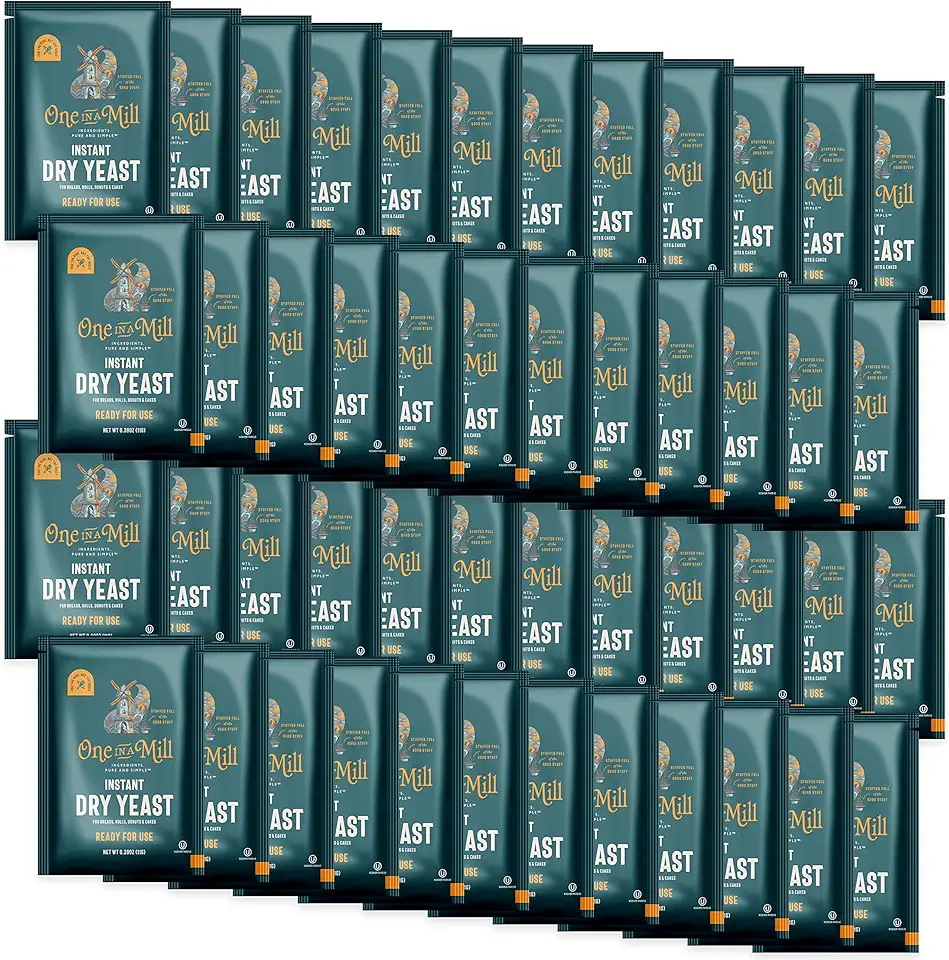 One in a Mill Instant Dry Yeast Packets | Fast Acting Self Rising Yeast for Baking Bread, Cake, Pizza Dough Crust | Kosher | Quick Rapid Rise Leavening Agent for Pastries | 48 Packets
$42.99
View details
One in a Mill Instant Dry Yeast Packets | Fast Acting Self Rising Yeast for Baking Bread, Cake, Pizza Dough Crust | Kosher | Quick Rapid Rise Leavening Agent for Pastries | 48 Packets
$42.99
View details
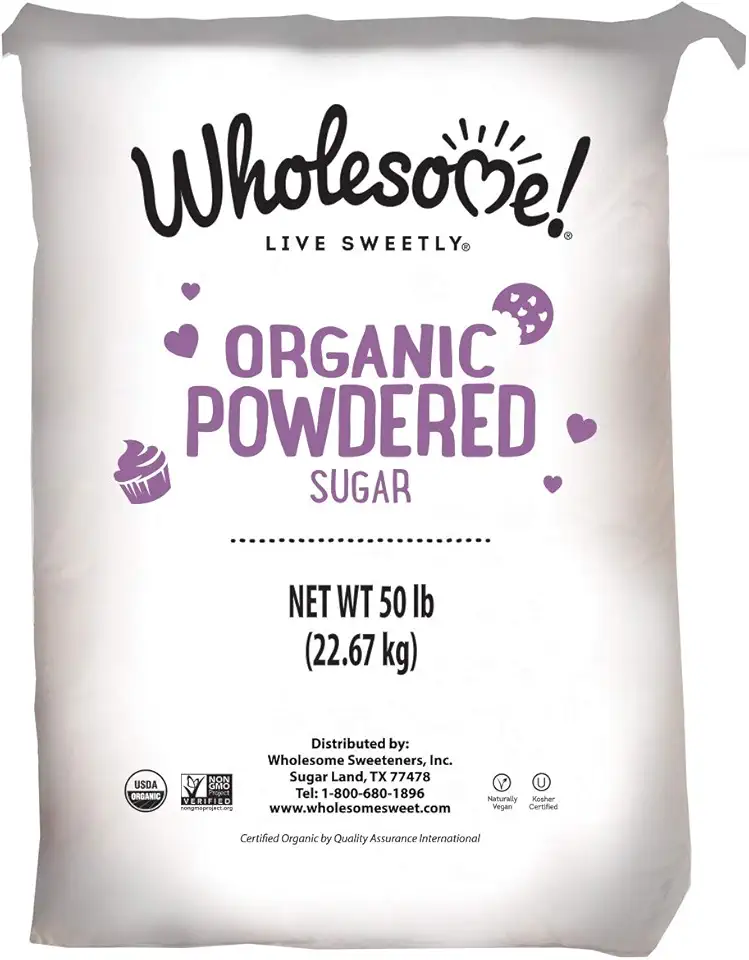 Wholesome Fair Trade Organic Powdered Sugar, Naturally Flavored Real Sugar, Non GMO & Gluten Free, 50 Pound (Pack of 1)
$106.95
View details
Prime
best seller
Wholesome Fair Trade Organic Powdered Sugar, Naturally Flavored Real Sugar, Non GMO & Gluten Free, 50 Pound (Pack of 1)
$106.95
View details
Prime
best seller
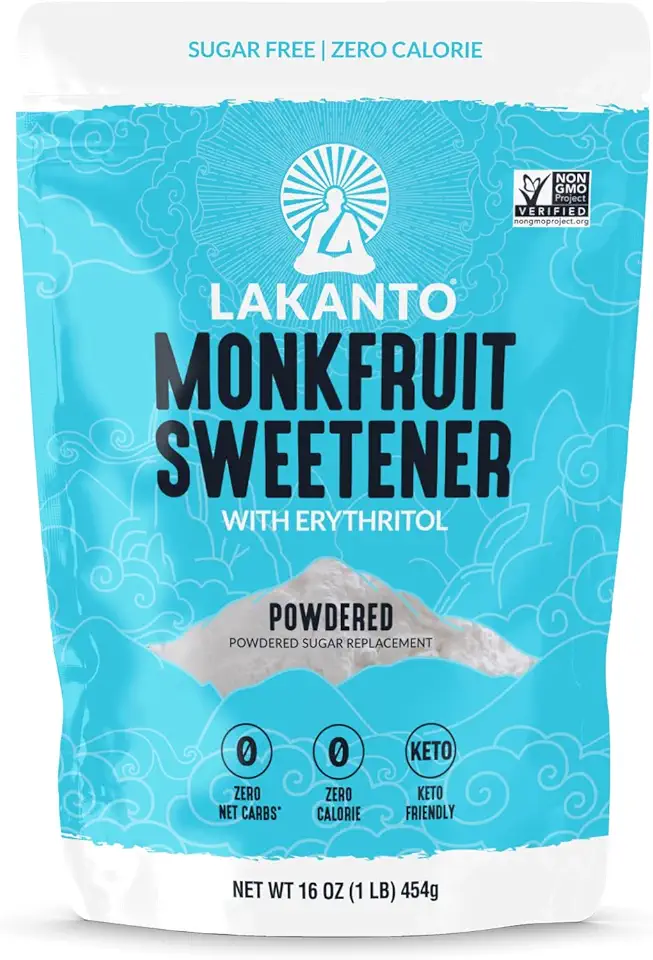 Lakanto Powdered Monk Fruit Sweetener with Erythritol - Powdered Sugar Substitute, Zero Calorie, Keto Diet Friendly, Zero Net Carbs, Baking, Extract, Sugar Replacement (Powdered - 1 lb)
$11.90
View details
Prime
Lakanto Powdered Monk Fruit Sweetener with Erythritol - Powdered Sugar Substitute, Zero Calorie, Keto Diet Friendly, Zero Net Carbs, Baking, Extract, Sugar Replacement (Powdered - 1 lb)
$11.90
View details
Prime
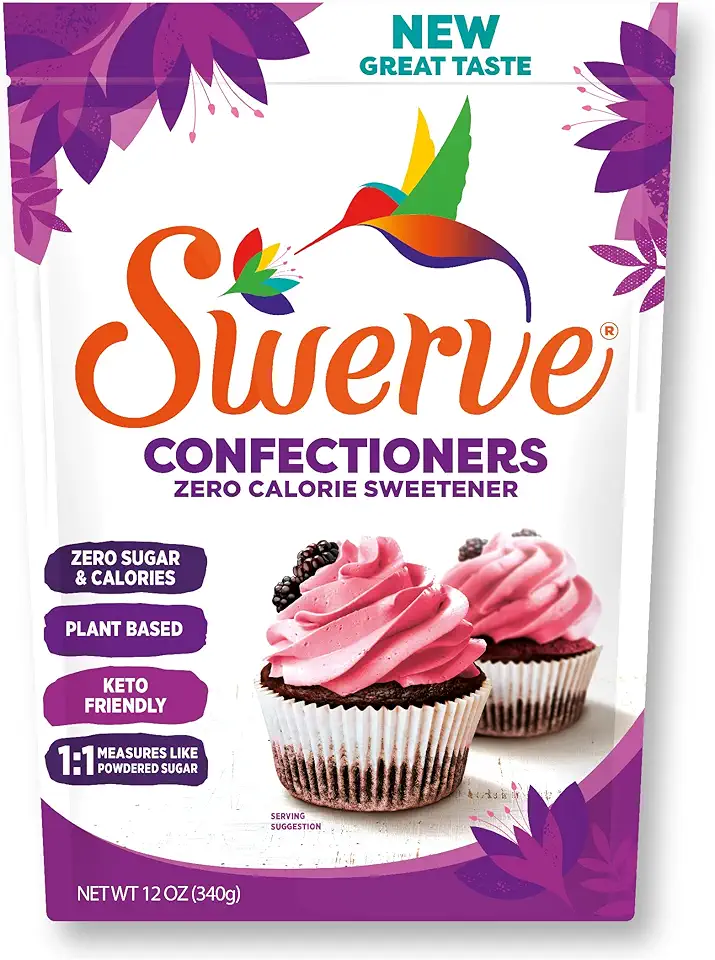 Swerve Sweetener Powder, Confectioners, 12 oz
$6.98
View details
Swerve Sweetener Powder, Confectioners, 12 oz
$6.98
View details
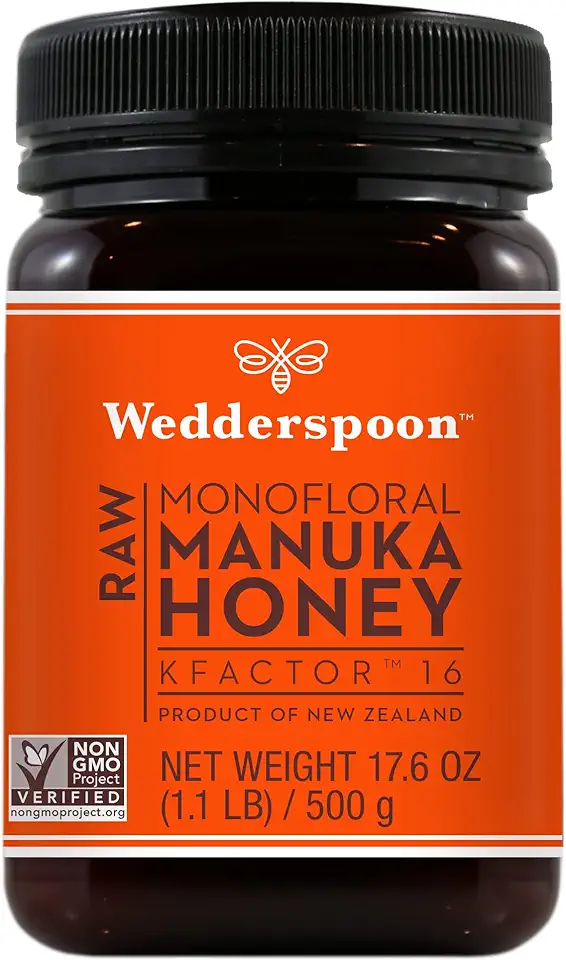 Wedderspoon Raw Premium Manuka Honey, KFactor 16, 17.6 Oz, Unpasteurized, Genuine New Zealand Honey, Traceable from Our Hives to Your Home
$34.36
$37.00
View details
Prime
Wedderspoon Raw Premium Manuka Honey, KFactor 16, 17.6 Oz, Unpasteurized, Genuine New Zealand Honey, Traceable from Our Hives to Your Home
$34.36
$37.00
View details
Prime
 Nate's Organic 100% Pure, Raw & Unfiltered Honey - USDA Certified Organic - 32oz. Squeeze Bottle
$16.97
View details
Prime
Nate's Organic 100% Pure, Raw & Unfiltered Honey - USDA Certified Organic - 32oz. Squeeze Bottle
$16.97
View details
Prime
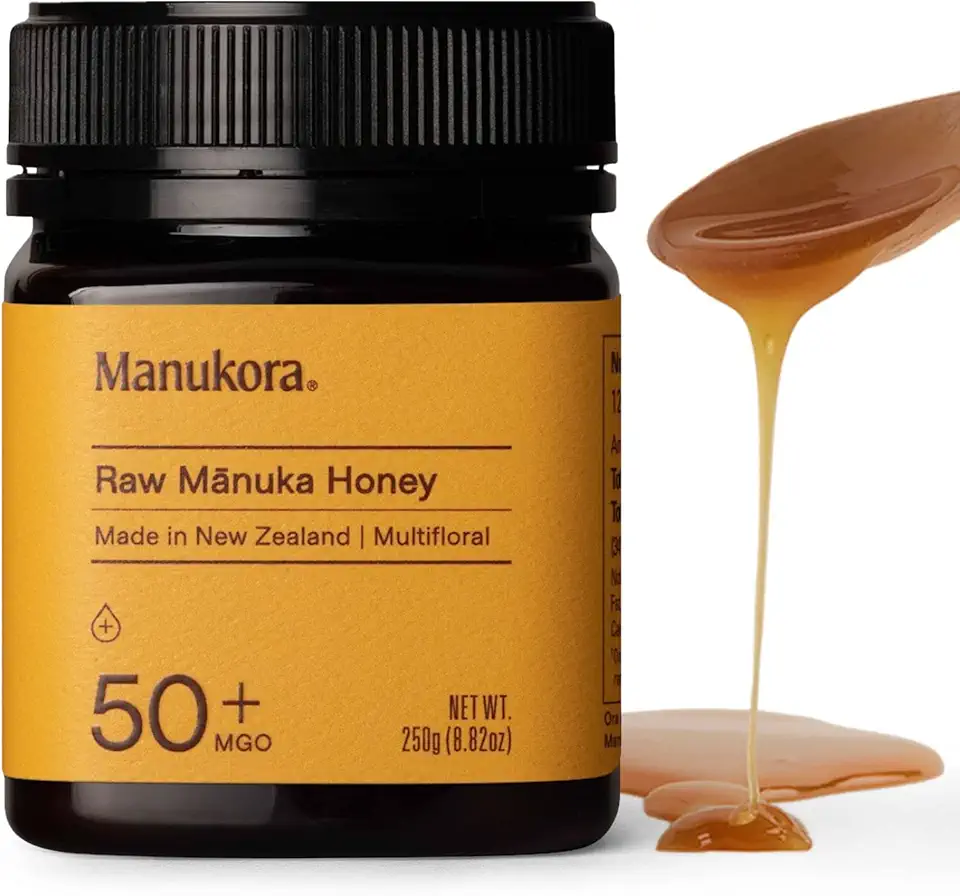 Manukora Raw Manuka Honey, MGO 50+, New Zealand Honey, Non-GMO, Traceable from Hive to Hand, Daily Wellness Support - 250g (8.82 Oz)
$13.24
View details
Manukora Raw Manuka Honey, MGO 50+, New Zealand Honey, Non-GMO, Traceable from Hive to Hand, Daily Wellness Support - 250g (8.82 Oz)
$13.24
View details
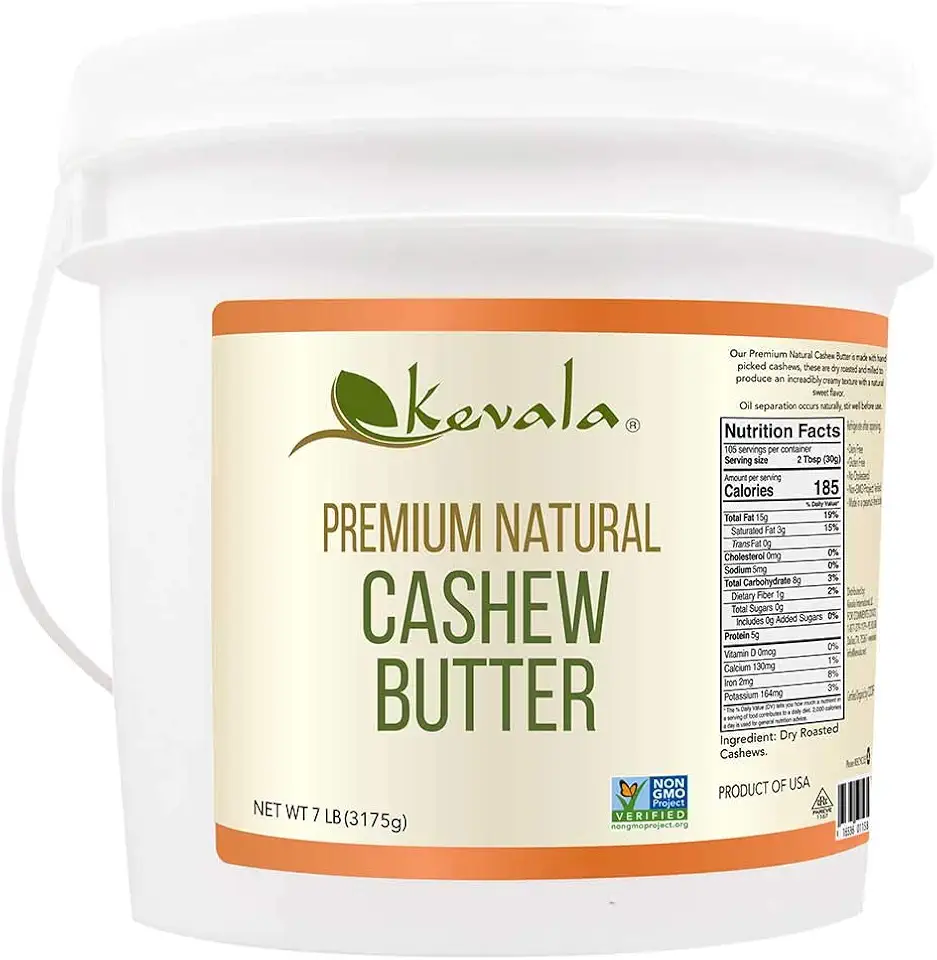 Kevala Cashew Butter 7 Lbs Pail
$83.62
View details
Prime
best seller
Kevala Cashew Butter 7 Lbs Pail
$83.62
View details
Prime
best seller
 4th & Heart Original Grass-Fed Ghee, Clarified Butter, Keto, Pasture Raised, Lactose and Casein Free, Certified Paleo (9 Ounces)
$11.49
View details
Prime
4th & Heart Original Grass-Fed Ghee, Clarified Butter, Keto, Pasture Raised, Lactose and Casein Free, Certified Paleo (9 Ounces)
$11.49
View details
Prime
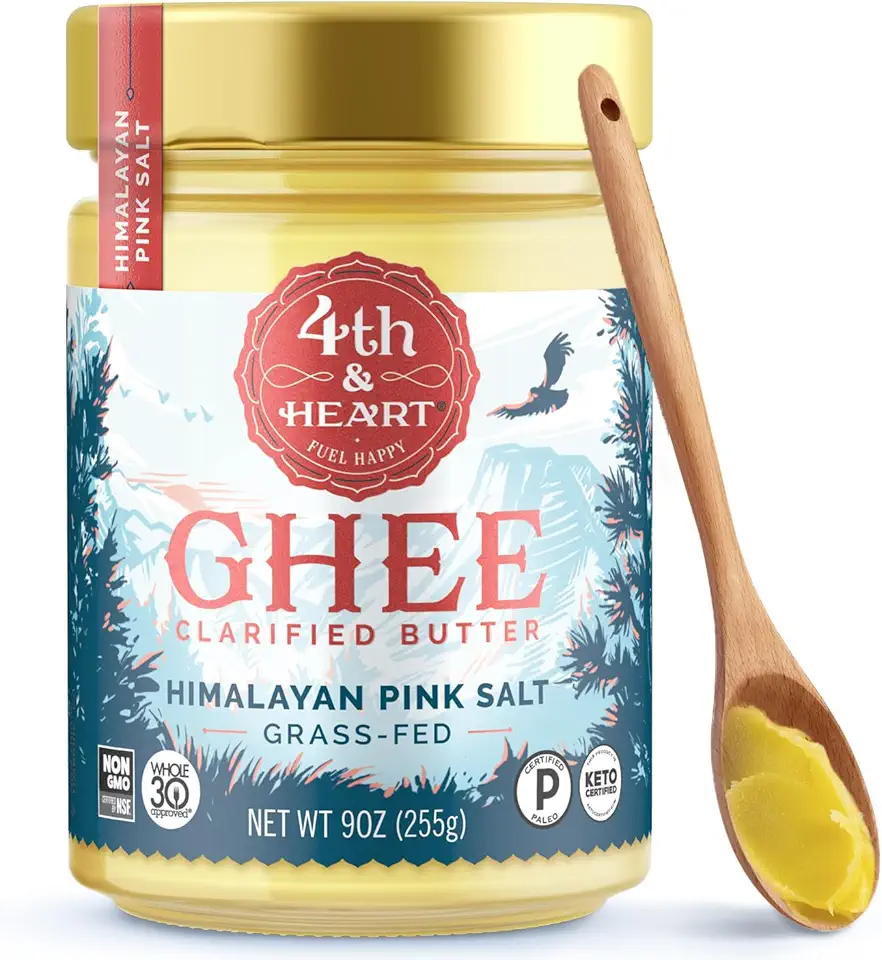 4th & Heart Himalayan Pink Salt Grass-Fed Ghee, Clarified Butter, Keto Pasture Raised, Non-GMO, Lactose and Casein Free, Certified Paleo (9 Ounces)
$9.49
View details
4th & Heart Himalayan Pink Salt Grass-Fed Ghee, Clarified Butter, Keto Pasture Raised, Non-GMO, Lactose and Casein Free, Certified Paleo (9 Ounces)
$9.49
View details
Layers Ingredients
 Kevala Cashew Butter 7 Lbs Pail
$83.62
View details
Prime
best seller
Kevala Cashew Butter 7 Lbs Pail
$83.62
View details
Prime
best seller
 4th & Heart Original Grass-Fed Ghee, Clarified Butter, Keto, Pasture Raised, Lactose and Casein Free, Certified Paleo (9 Ounces)
$11.49
View details
Prime
4th & Heart Original Grass-Fed Ghee, Clarified Butter, Keto, Pasture Raised, Lactose and Casein Free, Certified Paleo (9 Ounces)
$11.49
View details
Prime
 4th & Heart Himalayan Pink Salt Grass-Fed Ghee, Clarified Butter, Keto Pasture Raised, Non-GMO, Lactose and Casein Free, Certified Paleo (9 Ounces)
$9.49
View details
4th & Heart Himalayan Pink Salt Grass-Fed Ghee, Clarified Butter, Keto Pasture Raised, Non-GMO, Lactose and Casein Free, Certified Paleo (9 Ounces)
$9.49
View details
 Bob's Red Mill Gluten Free 1-to-1 Baking Flour, 22 Ounce (Pack of 4)
$23.96
View details
Prime
Bob's Red Mill Gluten Free 1-to-1 Baking Flour, 22 Ounce (Pack of 4)
$23.96
View details
Prime
 Antimo Caputo Chefs Flour - Italian Double Zero 00 - Soft Wheat for Pizza Dough, Bread, & Pasta, 2.2 Lb (Pack of 2)
$16.99
View details
Prime
best seller
Antimo Caputo Chefs Flour - Italian Double Zero 00 - Soft Wheat for Pizza Dough, Bread, & Pasta, 2.2 Lb (Pack of 2)
$16.99
View details
Prime
best seller
 King Arthur, Measure for Measure Flour, Certified Gluten-Free, Non-GMO Project Verified, Certified Kosher, 3 Pounds, Packaging May Vary
$8.62
View details
King Arthur, Measure for Measure Flour, Certified Gluten-Free, Non-GMO Project Verified, Certified Kosher, 3 Pounds, Packaging May Vary
$8.62
View details
Instructions
Step 1
In a large mixing bowl, combine the 500 grams of flour, 22 grams of fresh yeast, 10 grams of salt, 40 grams of powdered sugar, 10 grams of honey, and 30 grams of unsalted butter.
Step 2
In a separate bowl, mix 100 grams of milk with 140 grams of water. Warm the liquid until it is just warm to the touch, then gradually pour it into the flour mixture.
Step 3
Mix the ingredients until they begin to combine. Then, knead the dough on a lightly floured surface for approximately 10 to 15 minutes until it becomes elastic and smooth.
Step 4
Transfer the dough to a lightly oiled bowl and cover it with a damp cloth. Allow it to rise in a warm place for about 30 to 40 minutes or until doubled in size.
Step 5
Once risen, divide the dough into 16 equal pieces. Roll each piece into a thin sheet, then spread a mixture of 20 grams of flour and 250 grams of unsalted butter between each layer. Stack them on top of each other, ensuring the last layer is not brushed with butter.
Step 6
Wrap the layered dough in plastic wrap and place it in the freezer for 2 to 3 hours. This chilling step is crucial for achieving flaky layers in your croissants.
Step 7
After chilling, take the dough out and roll it into a thickness of approximately 5 mm. Cut the rolled dough into triangles to form your croissants. Be sure to roll each triangle from the base to the tip to form a crescent shape.
Step 8
Place the shaped croissants in a warm environment to proof. Ideally, this should be done in a lightly warmed oven with a bowl of hot water, allowing them to rise until they are about twice their original size, which may take about 1 to 1.5 hours.
Step 9
Before baking, brush the croissants with an egg wash made from 1 egg mixed with a splash of milk. Bake them in a preheated oven at 170°C (340°F) for about 15 to 20 minutes, or until golden brown. Make sure not to bake more than 6 to 8 at a time on a baking sheet to allow for proper expansion.
Servings
Think of hosting a picnic? Pack these croissants along with a selection of fruits and dips for an unforgettable outdoor feast. Imagine the warmth of the sun, laughter with friends, and these buttery delights sweetening every moment. 🍇🌼
Equipment
A sturdy mixing bowl is essential for combining your dough ingredients thoroughly. Ensure it’s large enough to allow for mixing without any spills.
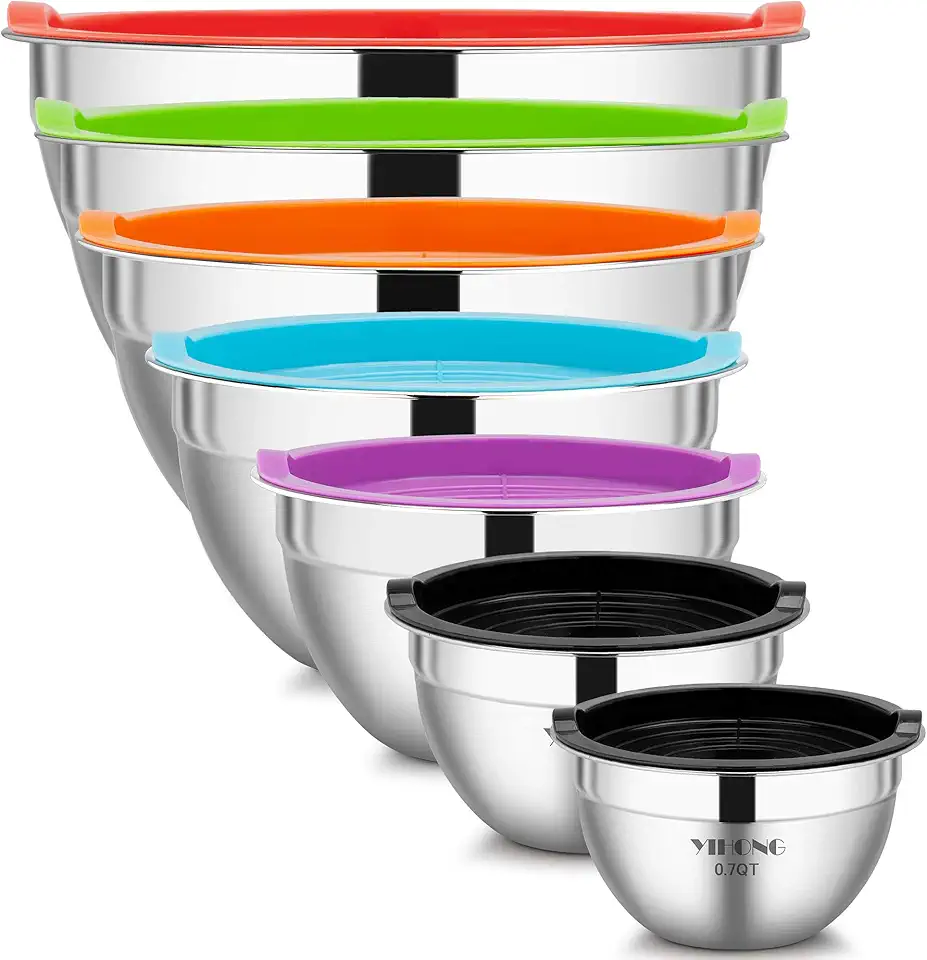 YIHONG 7 Piece Mixing Bowls with Lids for Kitchen, Stainless Steel Mixing Bowls Set Ideal for Baking, Prepping, Cooking and Serving Food, Nesting Metal Mixing Bowls for Space Saving Storage
$27.99
$35.99
View details
Prime
best seller
YIHONG 7 Piece Mixing Bowls with Lids for Kitchen, Stainless Steel Mixing Bowls Set Ideal for Baking, Prepping, Cooking and Serving Food, Nesting Metal Mixing Bowls for Space Saving Storage
$27.99
$35.99
View details
Prime
best seller
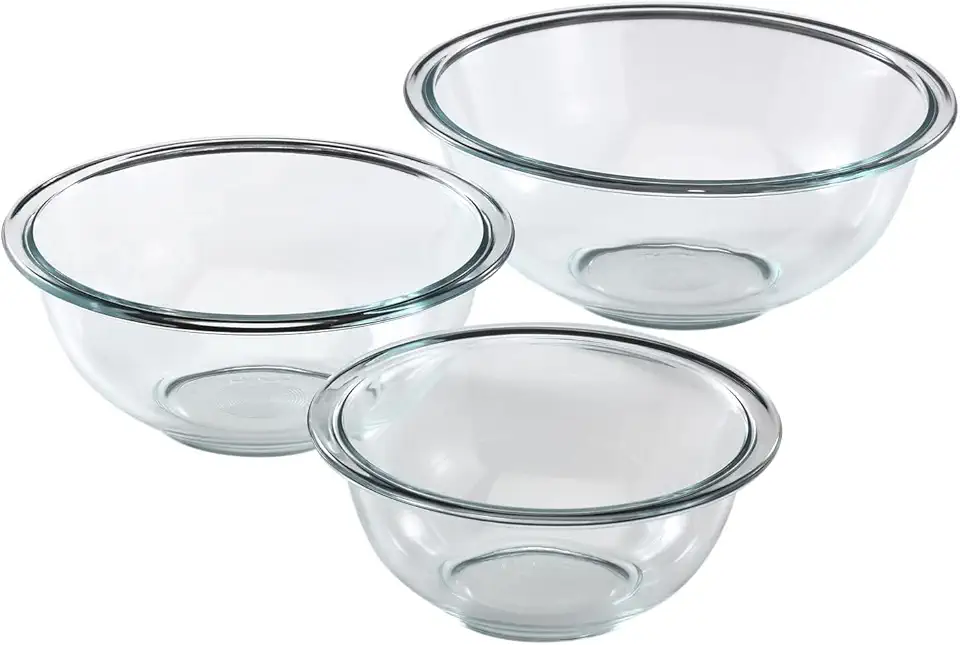 Pyrex Glass, 3-Piece, 3 PC Mixing Bowl Set
$17.53
View details
Prime
Pyrex Glass, 3-Piece, 3 PC Mixing Bowl Set
$17.53
View details
Prime
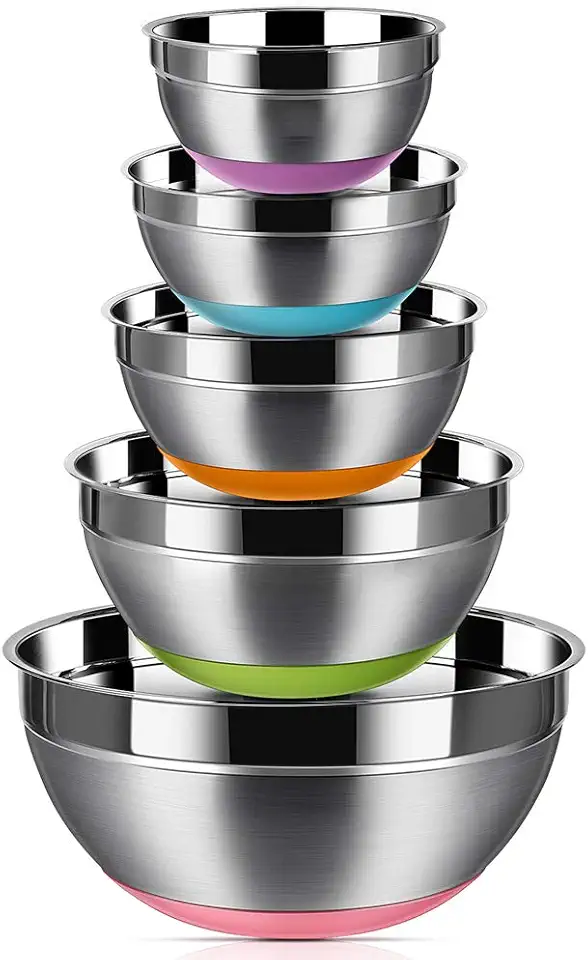 REGILLER Stainless Steel Mixing Bowls (Set of 5), Non Slip Colorful Silicone Bottom Nesting Storage Bowls, Polished Mirror Finish For Healthy Meal Mixing and Prepping 1.5-2 - 2.5-3.5 - 7QT (Colorful)
$26.99
View details
REGILLER Stainless Steel Mixing Bowls (Set of 5), Non Slip Colorful Silicone Bottom Nesting Storage Bowls, Polished Mirror Finish For Healthy Meal Mixing and Prepping 1.5-2 - 2.5-3.5 - 7QT (Colorful)
$26.99
View details
A great rolling pin helps you achieve the perfect thickness for your pastry layers. Opt for a heavy-duty model for optimal results.
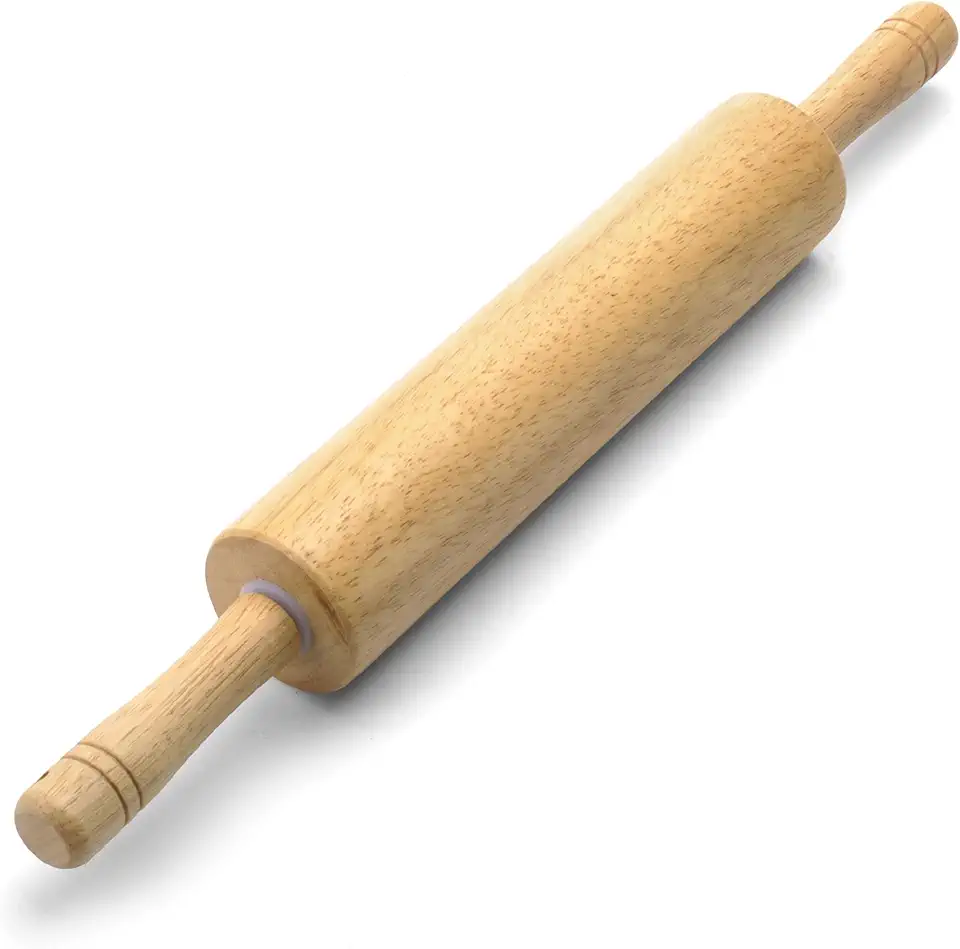 Farberware Classic Wood Rolling Pin, 17.75-Inch, Natural
$12.99
$13.99
View details
Prime
Farberware Classic Wood Rolling Pin, 17.75-Inch, Natural
$12.99
$13.99
View details
Prime
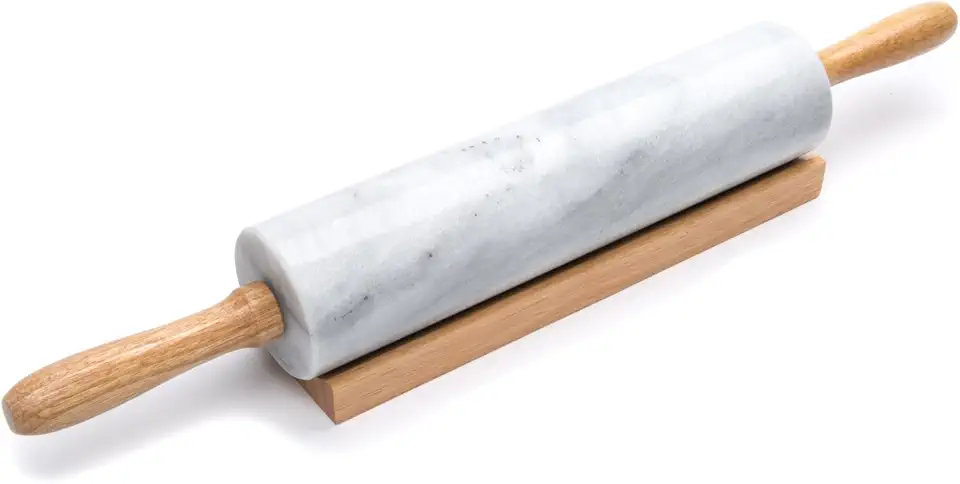 Fox Run Polished Marble Rolling Pin with Wooden Cradle, 10-Inch Barrel, White
$20.88
View details
Prime
Fox Run Polished Marble Rolling Pin with Wooden Cradle, 10-Inch Barrel, White
$20.88
View details
Prime
 French Rolling Pin (17 Inches) –WoodenRoll Pin for Fondant, Pie Crust, Cookie, Pastry, Dough –Tapered Design & Smooth Construction - Essential Kitchen Utensil
$9.99
View details
French Rolling Pin (17 Inches) –WoodenRoll Pin for Fondant, Pie Crust, Cookie, Pastry, Dough –Tapered Design & Smooth Construction - Essential Kitchen Utensil
$9.99
View details
This kitchen staple is perfect for lining your baking trays. It prevents sticking and ensures easy cleanup after baking!
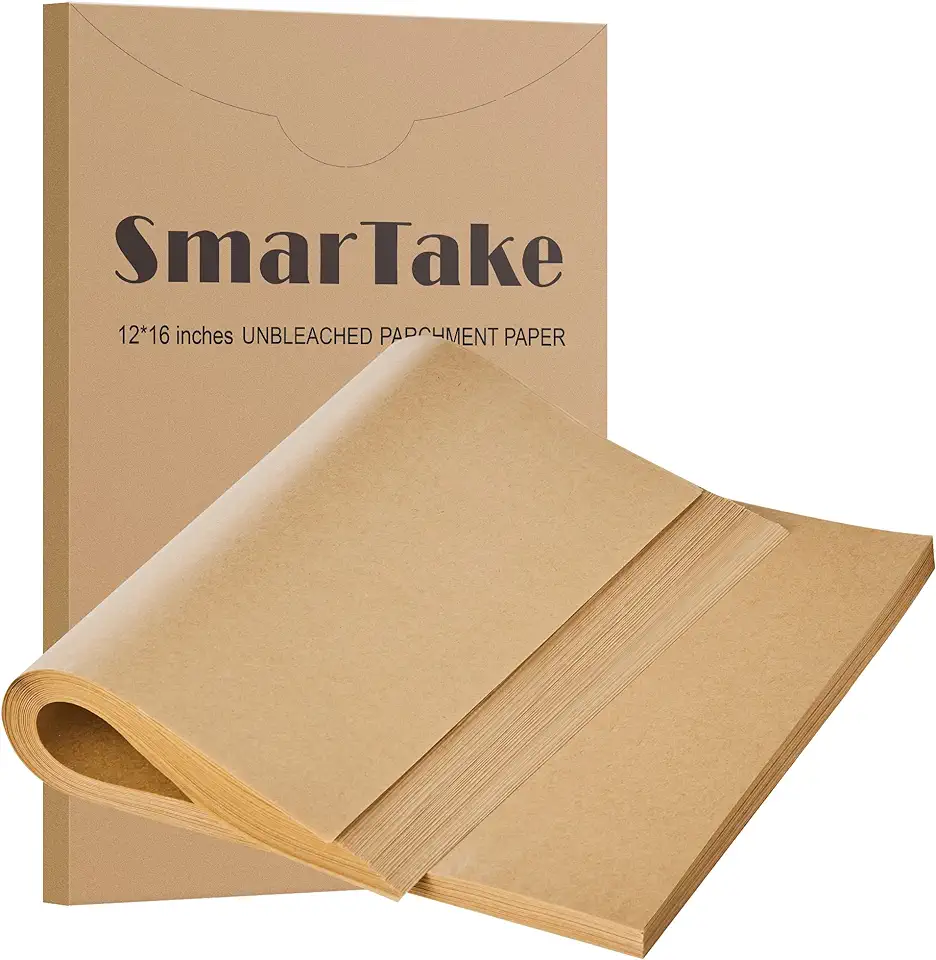 SMARTAKE 200 Pcs Parchment Paper Baking Sheets, 12x16 Inches Non-Stick Precut Baking Parchment, for Baking Grilling Air Fryer Steaming Bread Cup Cake Cookie and More (Unbleached)
$16.99
$20.99
View details
Prime
SMARTAKE 200 Pcs Parchment Paper Baking Sheets, 12x16 Inches Non-Stick Precut Baking Parchment, for Baking Grilling Air Fryer Steaming Bread Cup Cake Cookie and More (Unbleached)
$16.99
$20.99
View details
Prime
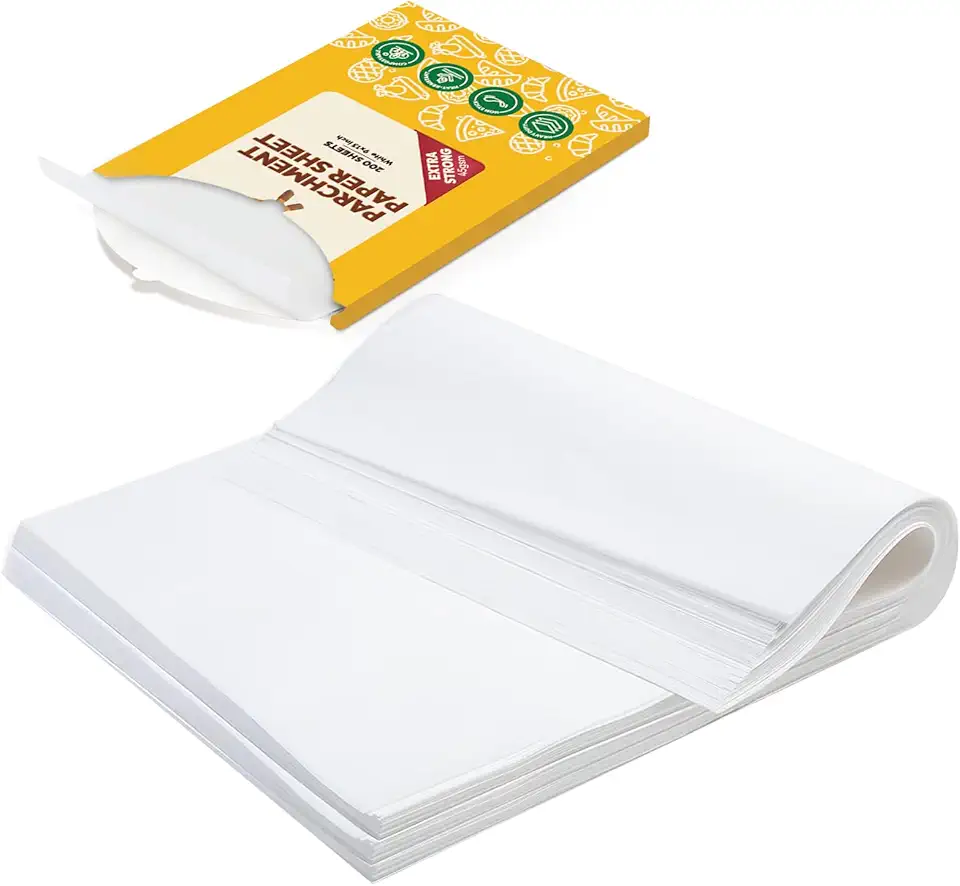 katbite 200Pcs 9x13 inch Heavy Duty Parchment Paper Sheets, Precut Parchment Paper for Quarter Sheet Pans Liners, Baking Cookies, Bread, Meat, Pizza, Toaster Oven (9"x13")
$13.99
View details
Prime
katbite 200Pcs 9x13 inch Heavy Duty Parchment Paper Sheets, Precut Parchment Paper for Quarter Sheet Pans Liners, Baking Cookies, Bread, Meat, Pizza, Toaster Oven (9"x13")
$13.99
View details
Prime
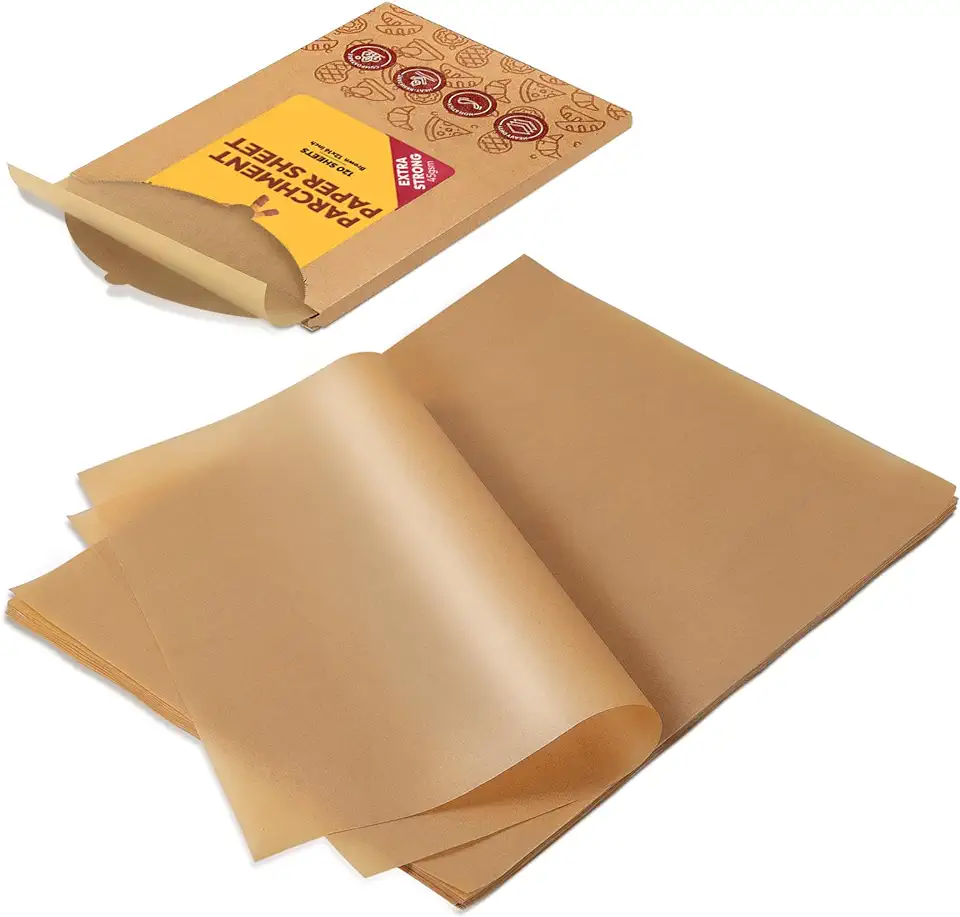 Katbite Unbleached Parchment Paper Baking Sheets, 120Pcs 12x16 Inch Precut Parchment Paper for Baking, Heavy Duty & Non-stick, Half Sheet Paper for Baking, Cooking, Steaming, Oven Paper
$12.99
View details
Katbite Unbleached Parchment Paper Baking Sheets, 120Pcs 12x16 Inch Precut Parchment Paper for Baking, Heavy Duty & Non-stick, Half Sheet Paper for Baking, Cooking, Steaming, Oven Paper
$12.99
View details
A standard baking sheet works best for even cooking. Make sure your tray can fit comfortably in your oven.
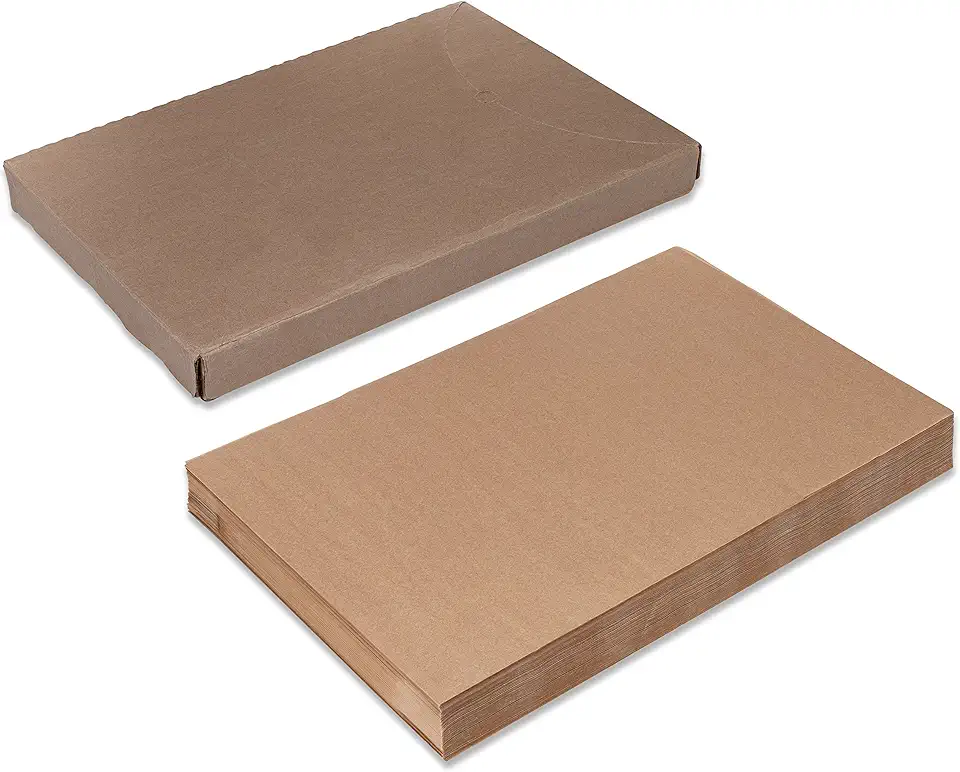 Paterson Paper 16" x 24" Full Size Unbleached Chromium-Free Reusable Baking Parchment Paper Sheets Commercial Bun/Sheet Pan Liners - 1000/Case - 425F - Non-Stick/Grease-Resistant
$169.58
View details
Prime
best seller
Paterson Paper 16" x 24" Full Size Unbleached Chromium-Free Reusable Baking Parchment Paper Sheets Commercial Bun/Sheet Pan Liners - 1000/Case - 425F - Non-Stick/Grease-Resistant
$169.58
View details
Prime
best seller
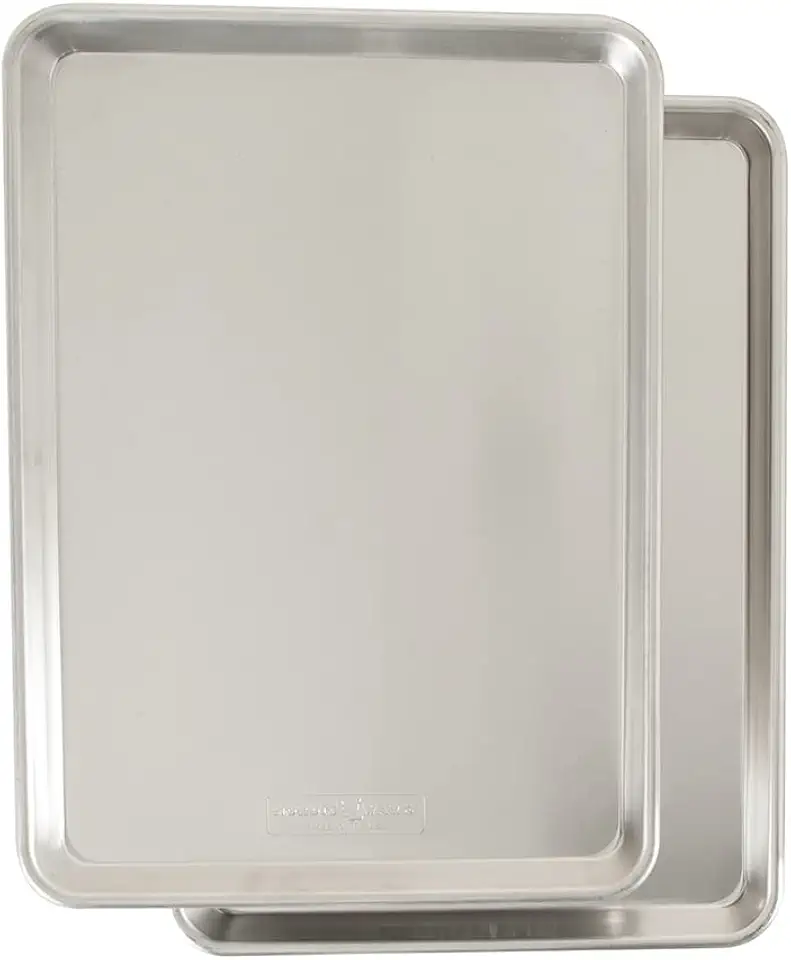 Nordic Ware Naturals Half Sheet, 2-Pack, Natural
$37.80
View details
Prime
Nordic Ware Naturals Half Sheet, 2-Pack, Natural
$37.80
View details
Prime
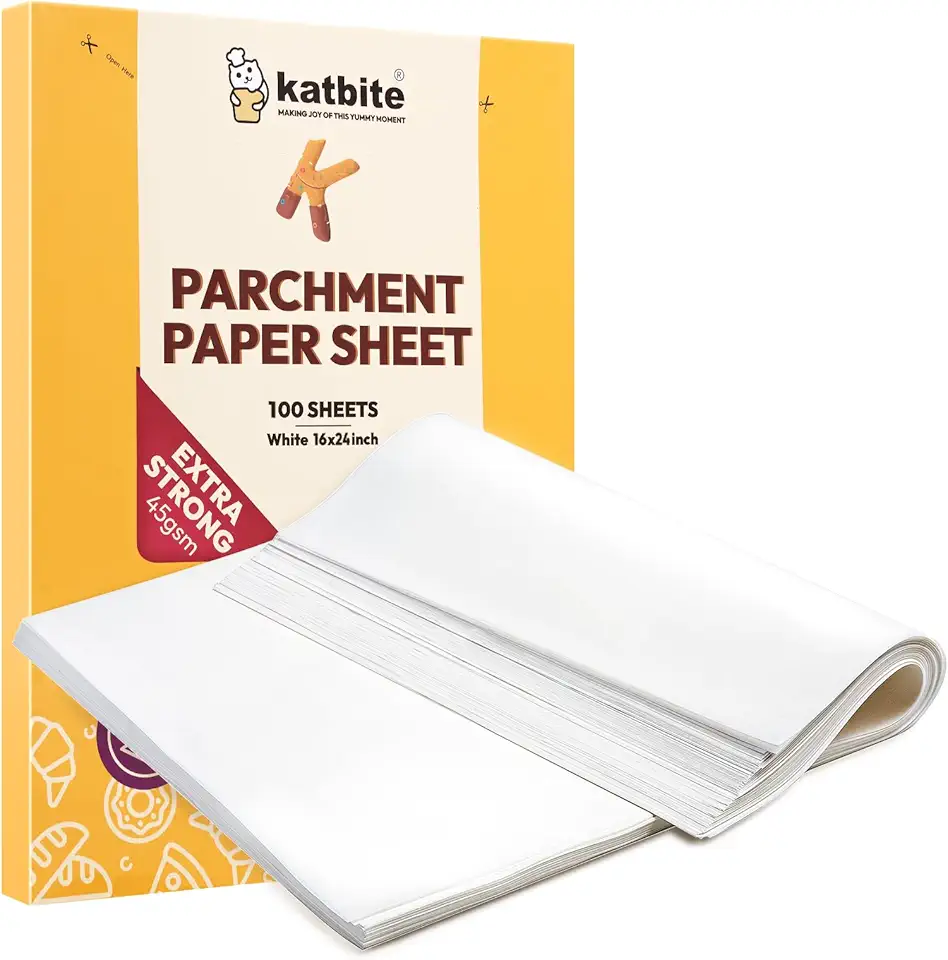 Katbite 16x24 inch Heavy Duty Parchment Paper Sheets, 100Pcs Precut Non-Stick Full Parchment Sheets for Baking, Cooking, Grilling, Frying and Steaming, Full Sheet Baking Pan Liners, Commercial Baking
$18.99
$25.99
View details
Katbite 16x24 inch Heavy Duty Parchment Paper Sheets, 100Pcs Precut Non-Stick Full Parchment Sheets for Baking, Cooking, Grilling, Frying and Steaming, Full Sheet Baking Pan Liners, Commercial Baking
$18.99
$25.99
View details
A pastry brush is vital for applying the egg wash to give your croissants that perfect golden sheen.
Variations
If you're gluten-free, you can substitute all-purpose flour with a gluten-free blend that works well for baking. Ensure that the blend contains xanthan gum for the best texture! 🌾❌ For those following a vegan diet, replace butter with a plant-based alternative and use almond or oat milk instead of regular milk. These alternatives will keep your croissants delicious and fluffy, with no compromise on flavor! 🥥💚
Faq
- What if my dough is too sticky?
If your dough feels too sticky while mixing, try adding a little more flour, one tablespoon at a time, until you can work with it comfortably.
- How can I make sure my croissants are flaky?
To achieve the flakiness, it's all about the layering! Make sure to roll and fold your butter into the dough correctly to create those flaky layers.
- Can I make the dough ahead of time?
Absolutely! You can prepare the dough in advance and store it in the fridge. Just allow it to come to room temperature before rolling out.
- What’s the best way to store leftover croissants?
Keep your leftover croissants in an airtight container at room temperature for up to two days. You can also freeze them to preserve their freshness for up to three months!
- Can I use frozen butter in the recipe?
Using cold butter is key for flaky layers, but frozen butter can be tricky for rolling. It's best to use chilled butter for optimal dough consistency.
- Can I fill the croissants?
Certainly! Feel free to add fillings like chocolate, almond paste, or ham and cheese. Just be careful not to overfill to ensure they cook properly!

